The Alhambra Part 1
What is it about the Alhambra that inspired so many writers and poets? Washington Irving, Victor Hugo, Federico Garcia Lorca, and Ernest Hemingway all wrote about it. They called it a dream, a poem, a jewel, a treasure, heaven. I was curious to learn more about the romance and mystique of the Alhambra.
A Brief History
The Alhambra is a walled complex atop a hill in the city of Granada, at the base of the Sierra Nevada mountain range in southern Spain. The name comes from the Arabic al-Ḥamrā, meaning “the red one,” referring to the reddish local clay used to build its walls.
For centuries (1238 to 1492), the Alhambra was the capital city of the Nasrid Dynasty, the longest and last Muslim dynasty in the Iberian Peninsula. During that era, there were seven major palaces in the Alhambra, and 3,000 people lived (and worked) inside the walls. The Nasrids were famous for their mastery of the decorative arts.
With the Christian Reconquest in January 1492, the Alhambra became a Spanish royal palace. Queen Isabella I of Castile and King Ferdinand II of Aragon lived there for several months, during which time they signed the Capitulations of Santa Fe, the contract with Christopher Columbus for his expedition across the Atlantic. (We saw this document at the Archive of the Indies in Seville.)
In the mid-16th century, the Alhambra began to fall into disrepair. Over the years, it was abandoned, plundered, and vandalized. In the 19th century, Europe became fascinated with the Orient, and in 1832, American writer Washington Irving published Tales of the Alhambra. After extensive restoration efforts, the Alhambra and Generalife were named UNESCO World Heritage Sites in 1984.
The Generalife
The Generalife was on the next hill, visible from our parador (hotel) inside the Alhambra. The name is said to come from the Arabic jannat al-‘arīf, meaning Garden of the Architect.
Our tour guide Antonio met us at the parador, and we walked across a pedestrian bridge to the Generalife, meeting up with the rest of our tour group just inside the main entrance. From the Generalife Garden, we could see the Alhambra and the farms and orchards that had once provided food for its residents. The Generalife Summer Palace had been a hunting lodge and peaceful retreat for the royal families and their guests. It had a pretty courtyard and an upper gallery where we could enjoy the view from a higher vantage point.
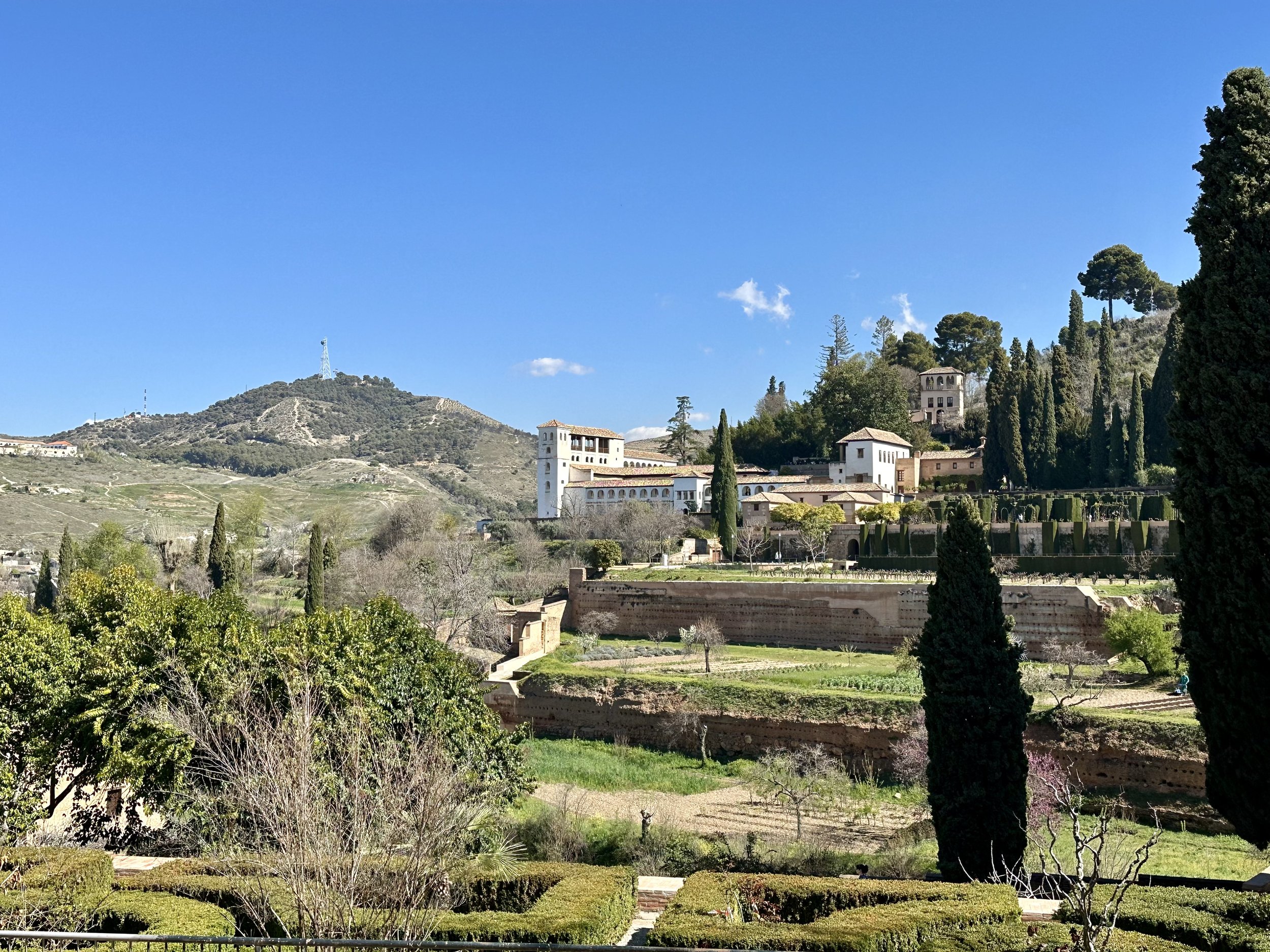
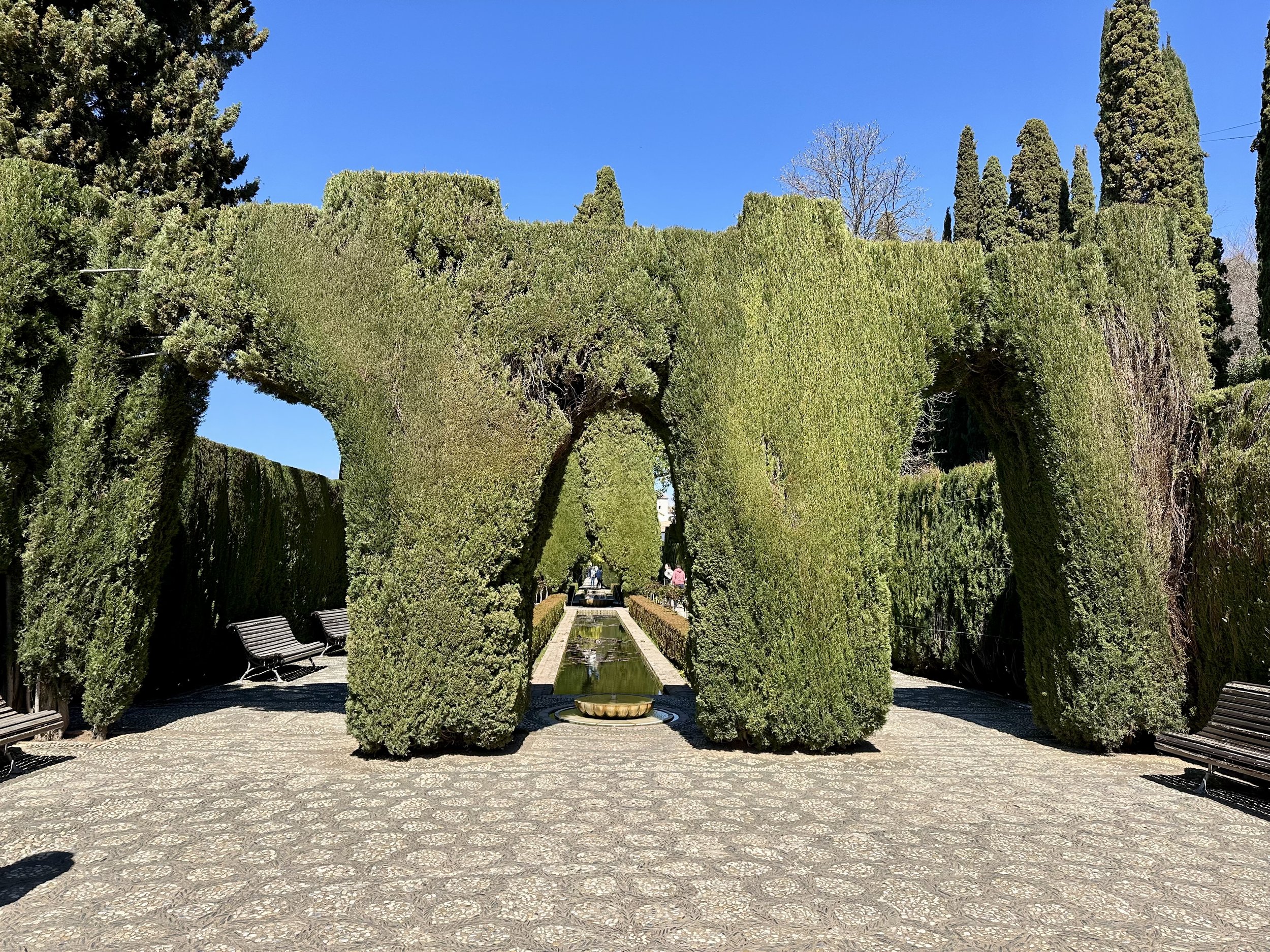
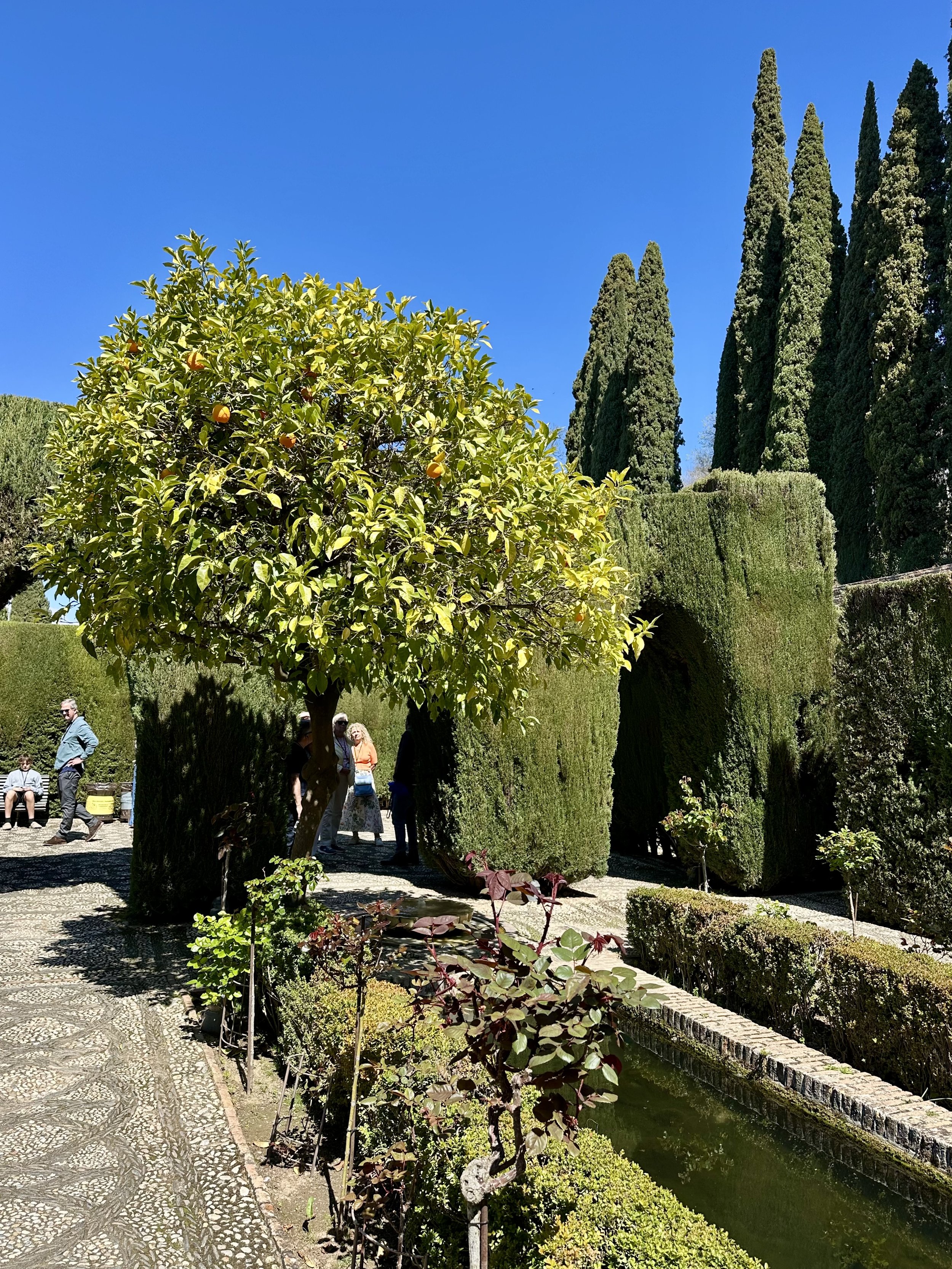
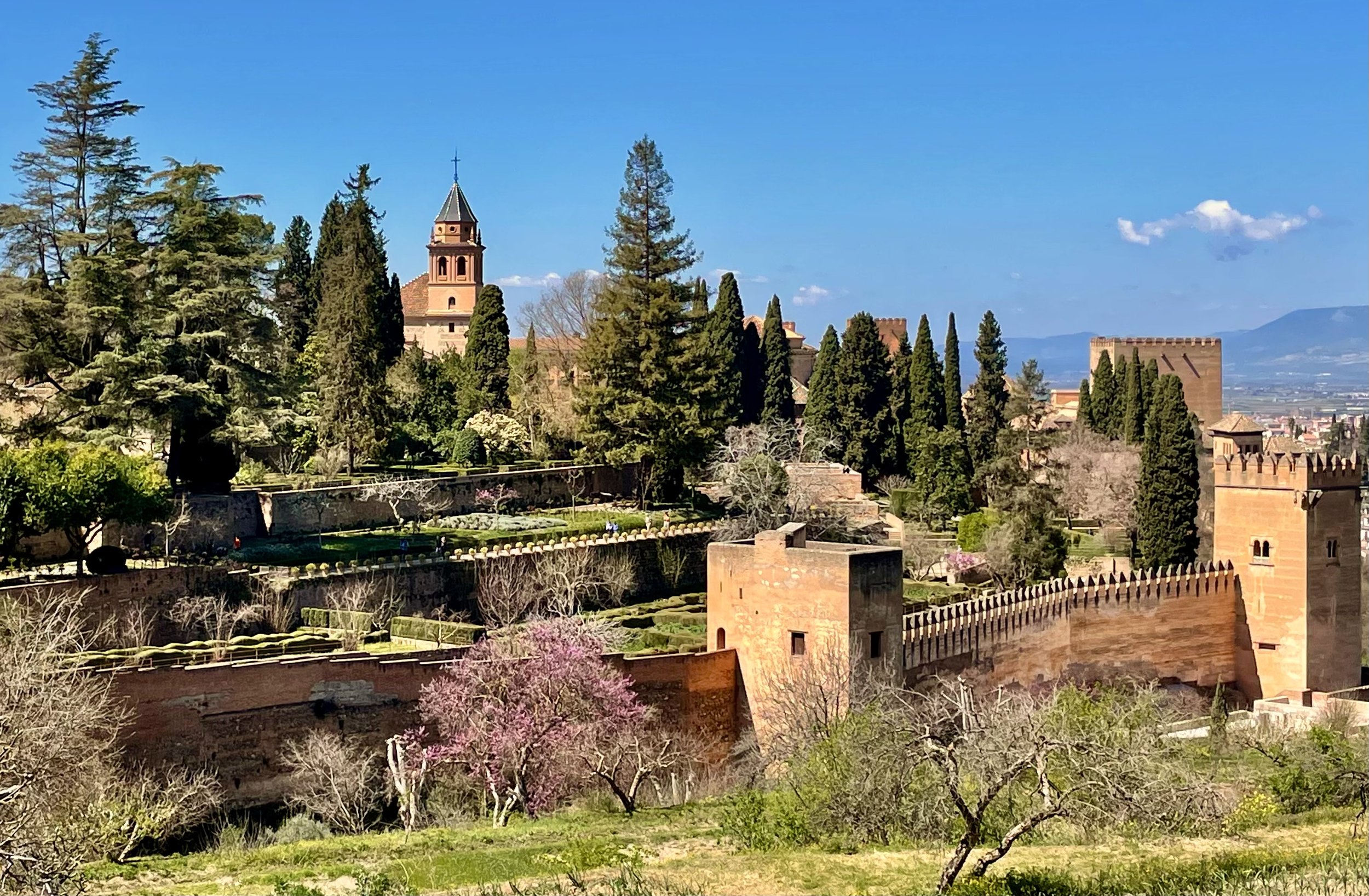
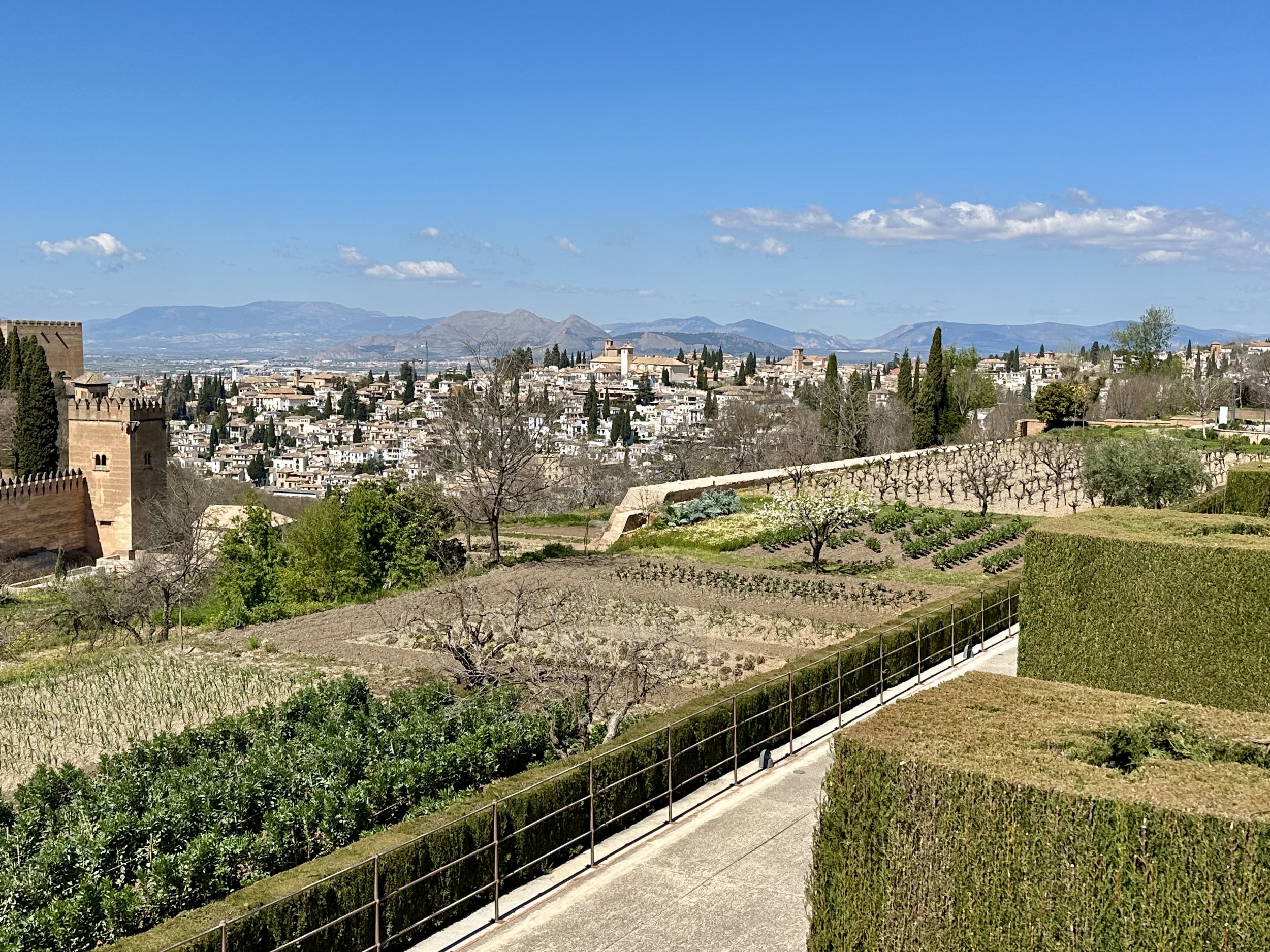

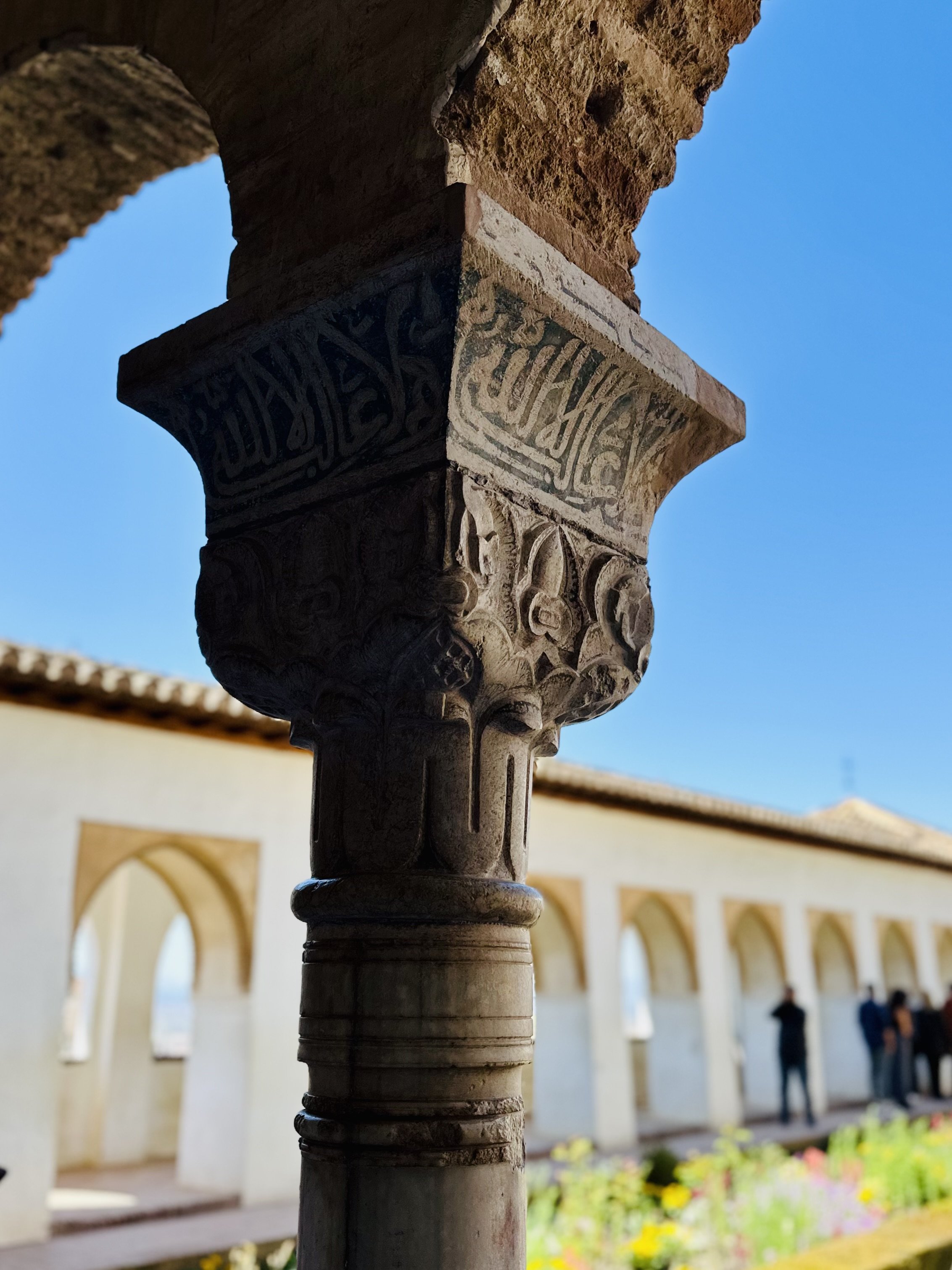
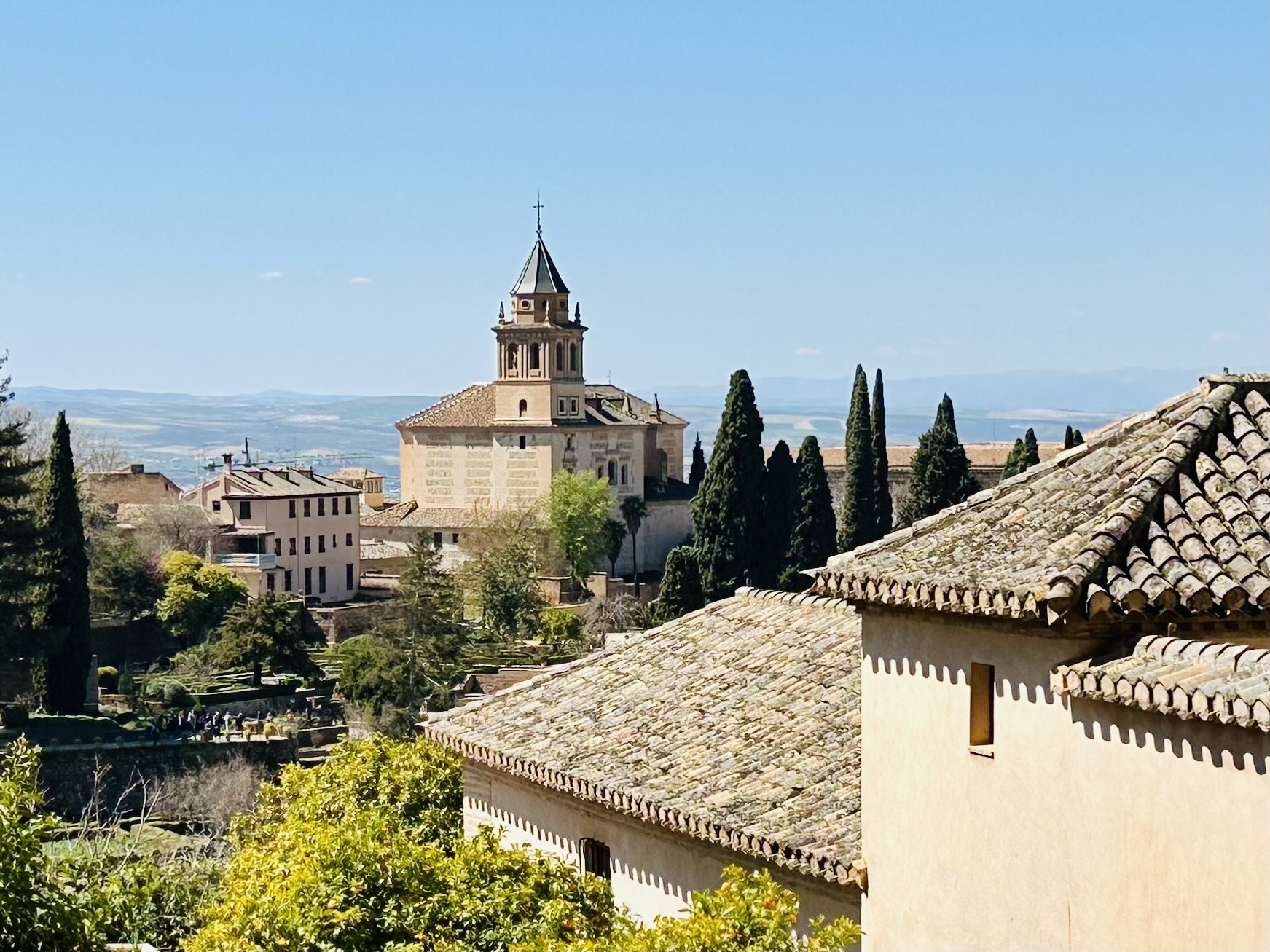
We left the Summer Palace and walked back through the gardens, pausing once more to enjoy the marvelous view from the Generalife.
The Medina
We walked past a pretty rooftop garden and then along the wide path that led back to the Medina, the residential area of the Alhambra, once home to thousands of people who served the needs of the royal palaces. The houses were no longer standing, but their foundations remained. Rectangular pools marked where there had once been courtyards, the size of each pool indicating the relative wealth and status of the resident. Our parador (formerly a Nasrid palace) was right in the center of the Medina.
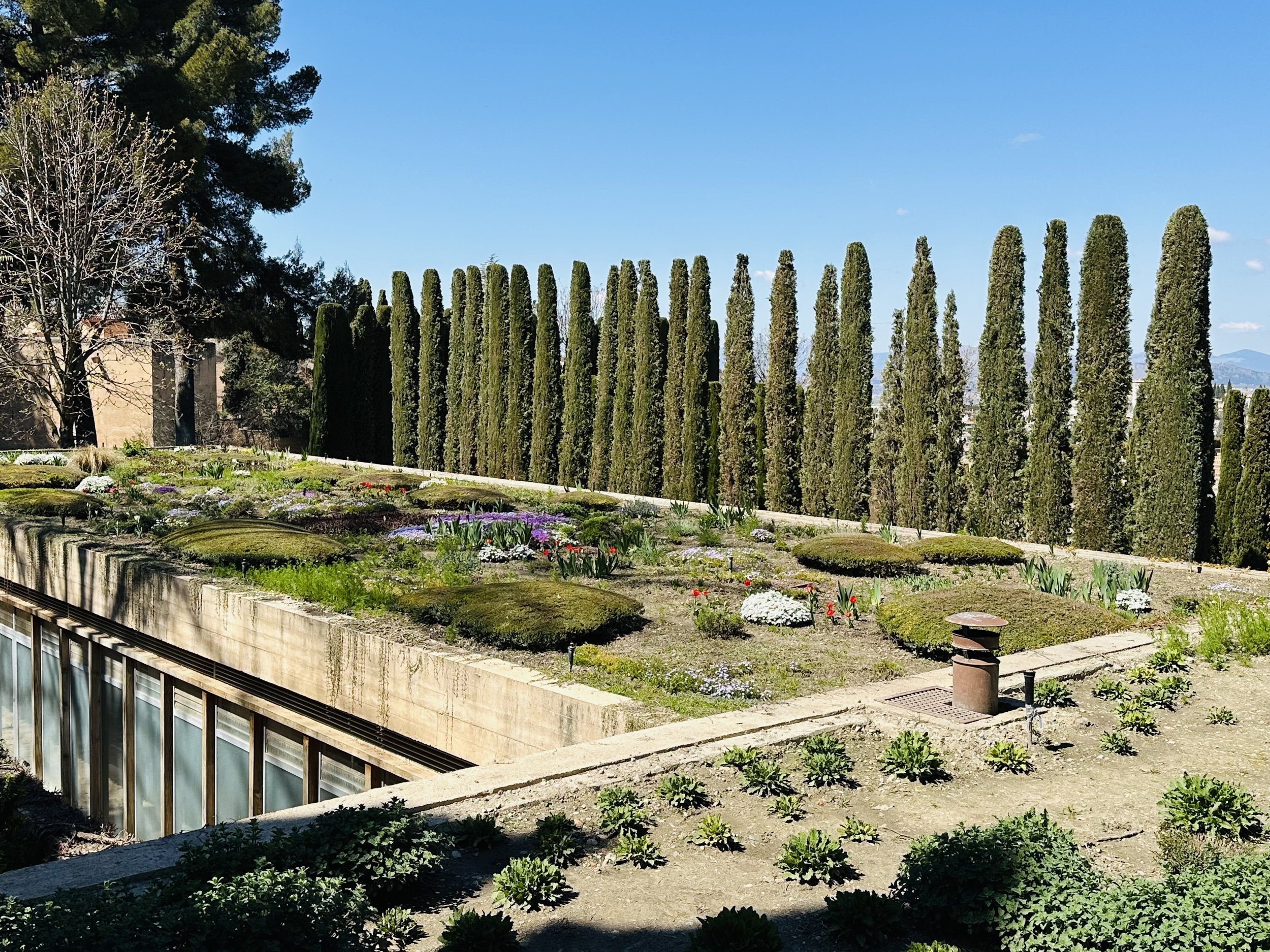
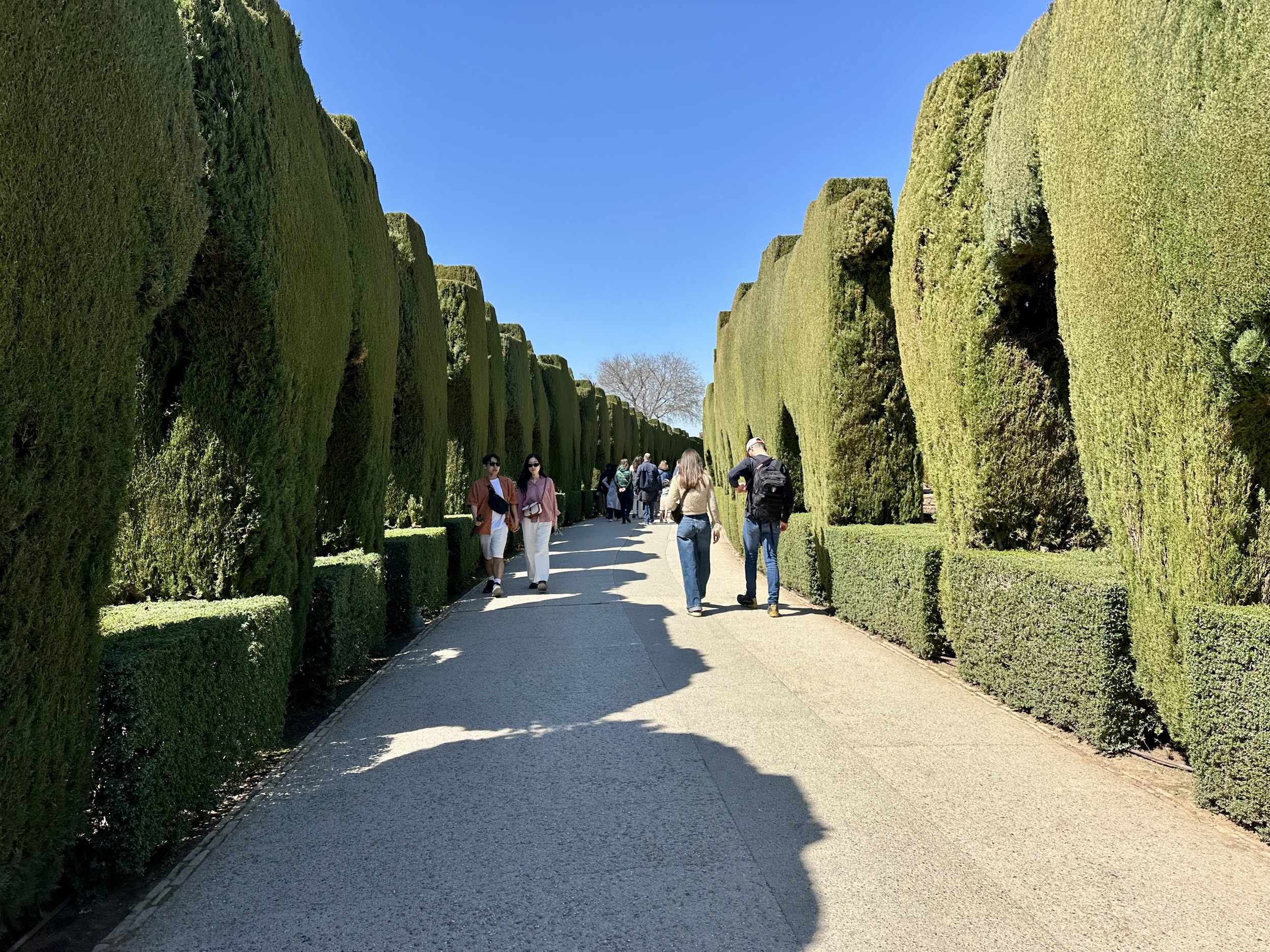

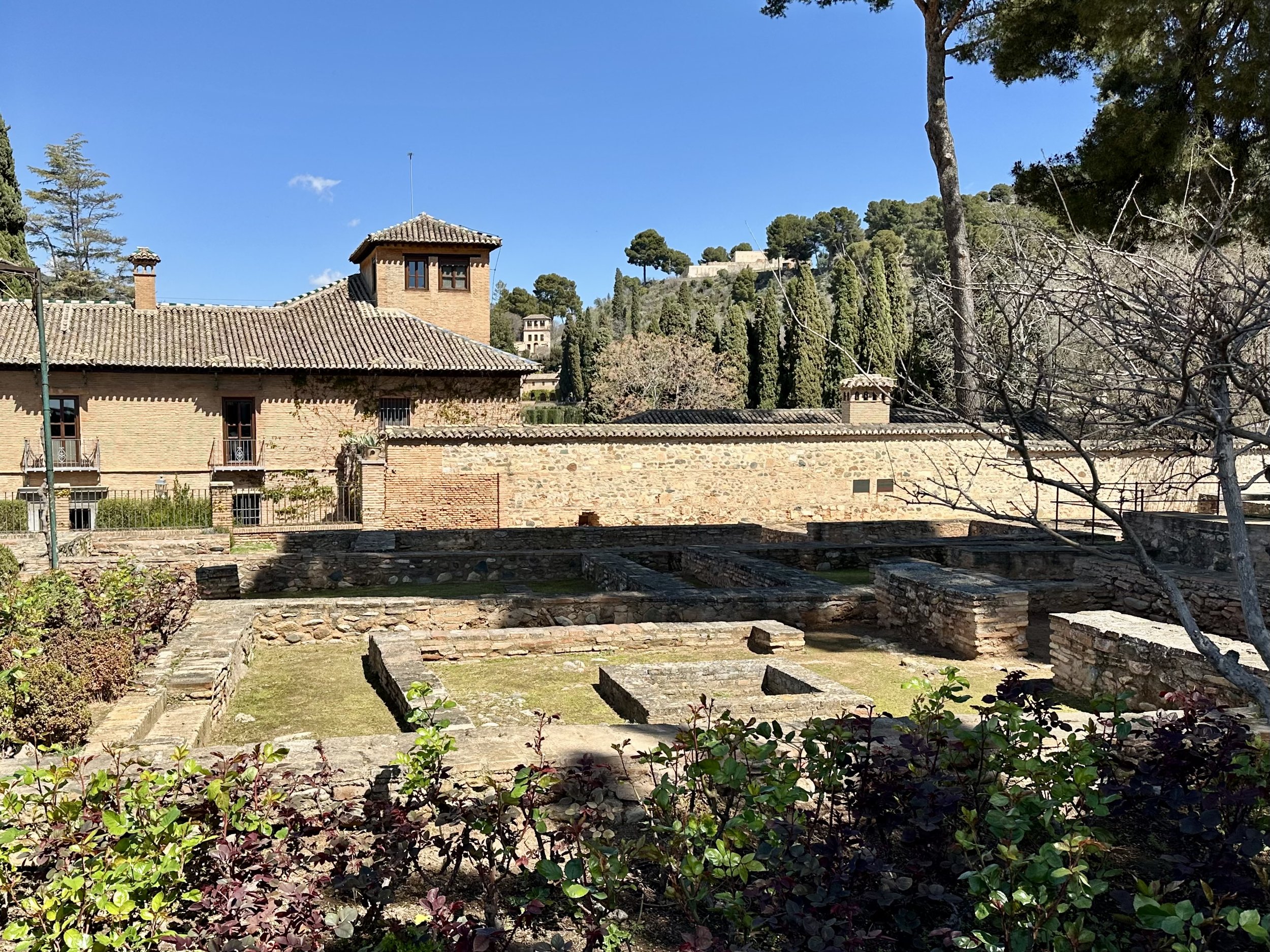
The Nasrid Palaces
Antonio explained that we would visit the Nasrid palaces in chronological order, so that we could see the evolution of the Moorish architecture and decoration. There were three of them: the Mexuar (Sultan Isma'il I), the Palace of Comares (Sultan Yusuf I) and the Palace of the Lions (Sultan Mohammed V).
The next hour was surreal. In the courtyards, lacy arches on delicate columns were mirrored in the reflective pools, and cooling water trickled along channels in the marble floors and stairways. The palace rooms were exquisite. Every surface was covered with expertly crafted decorations. Overhead were intricately carved wooden ceilings. The upper walls wore intricate “lace” made from elaborately carved plaster. The lower walls had colorful mosaics with clever tessellations. Arabic inscriptions in stylized calligraphy formed beautiful, seemingly abstract patterns. In the last (and therefore newest) palace, the plasterwork was more complex and three-dimensional, a technique I had not seen before.
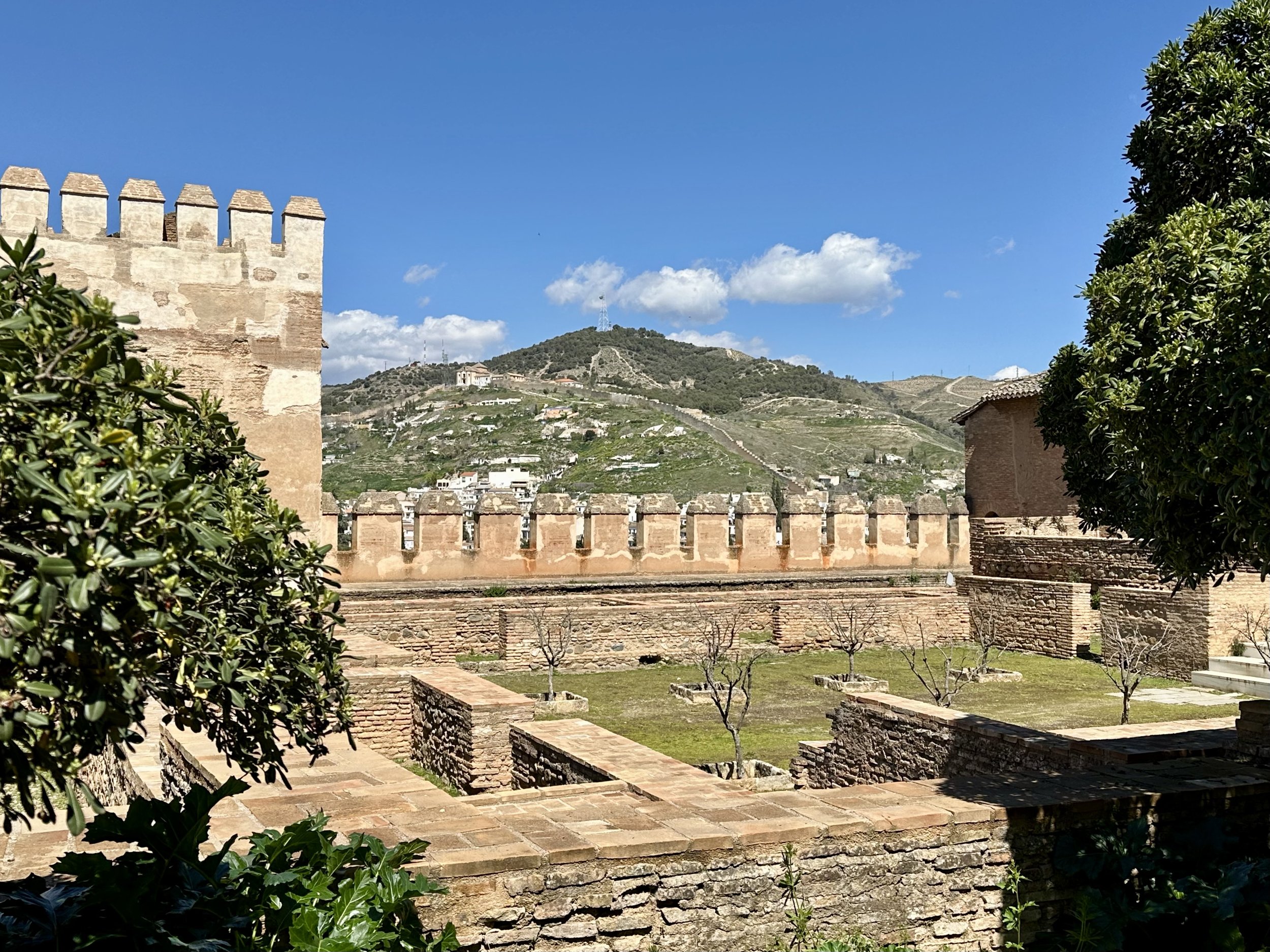
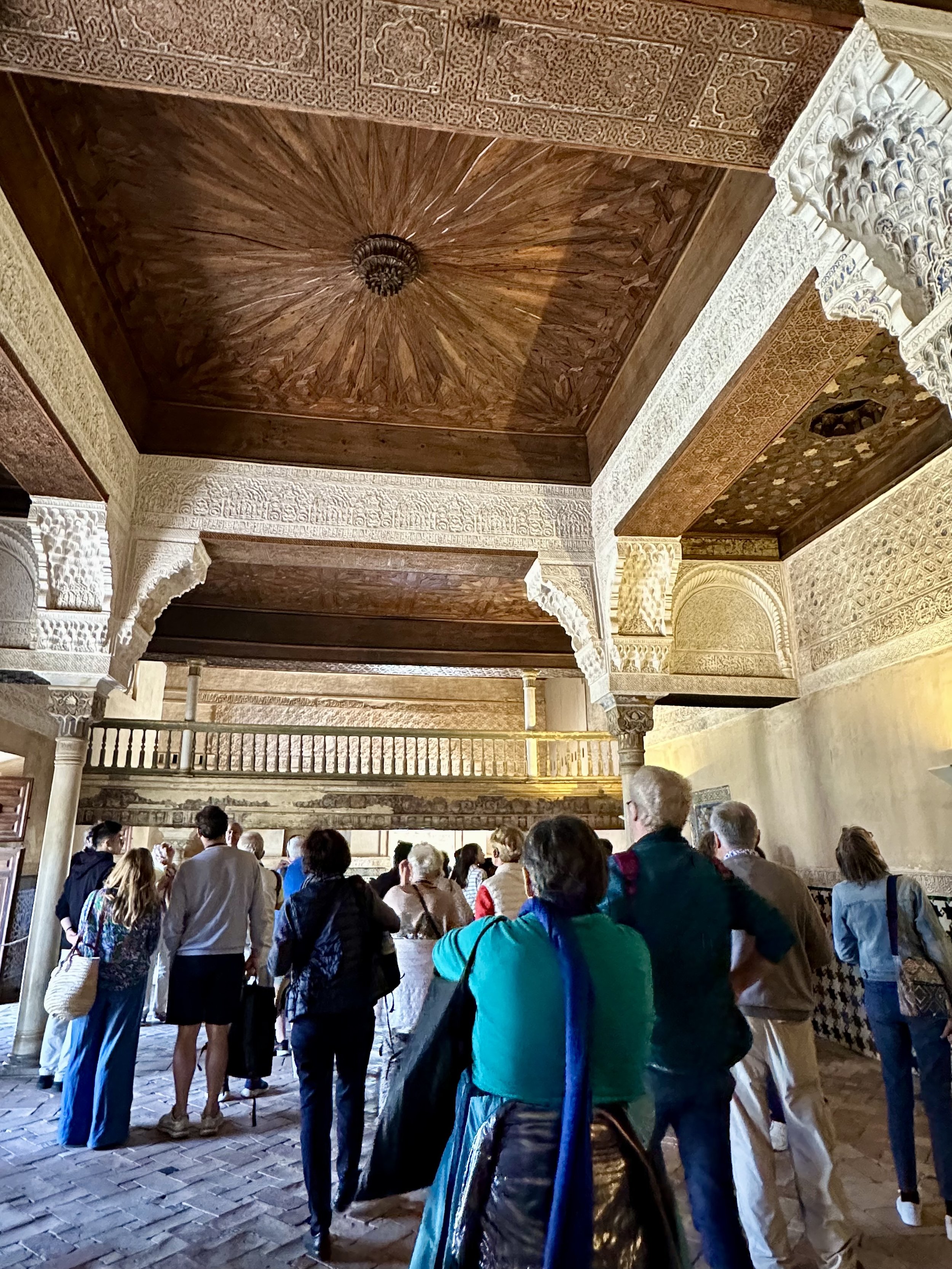
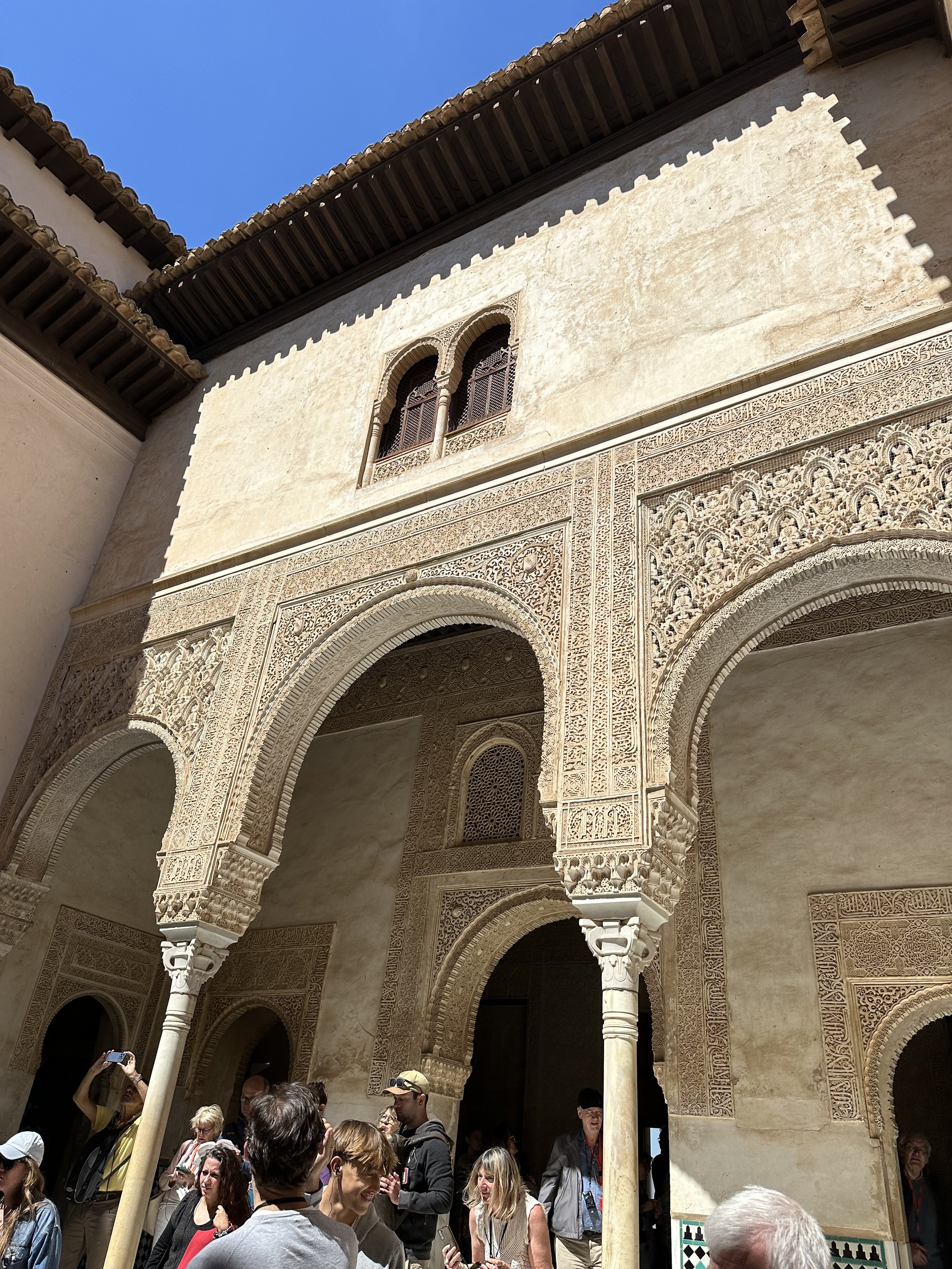
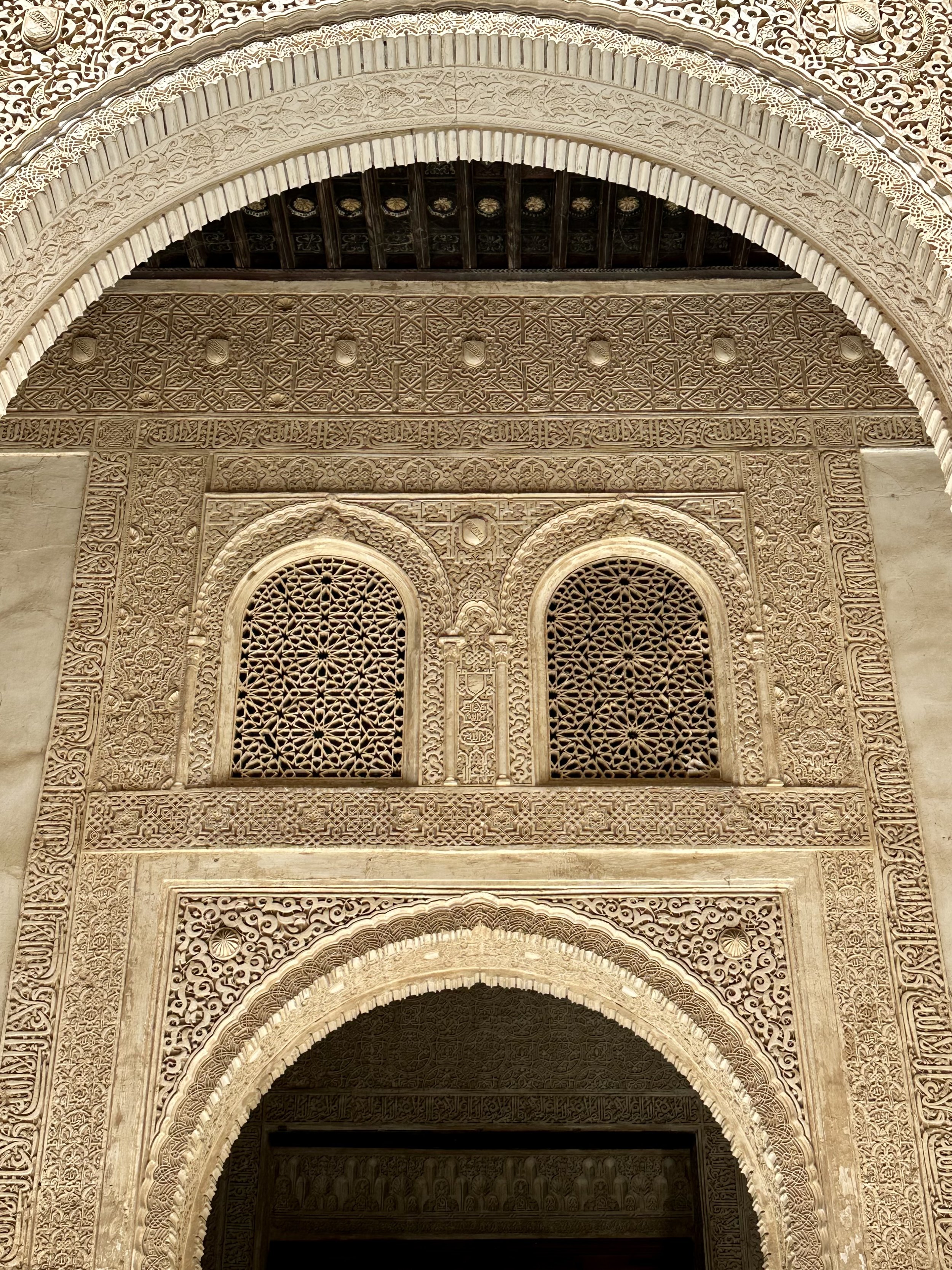
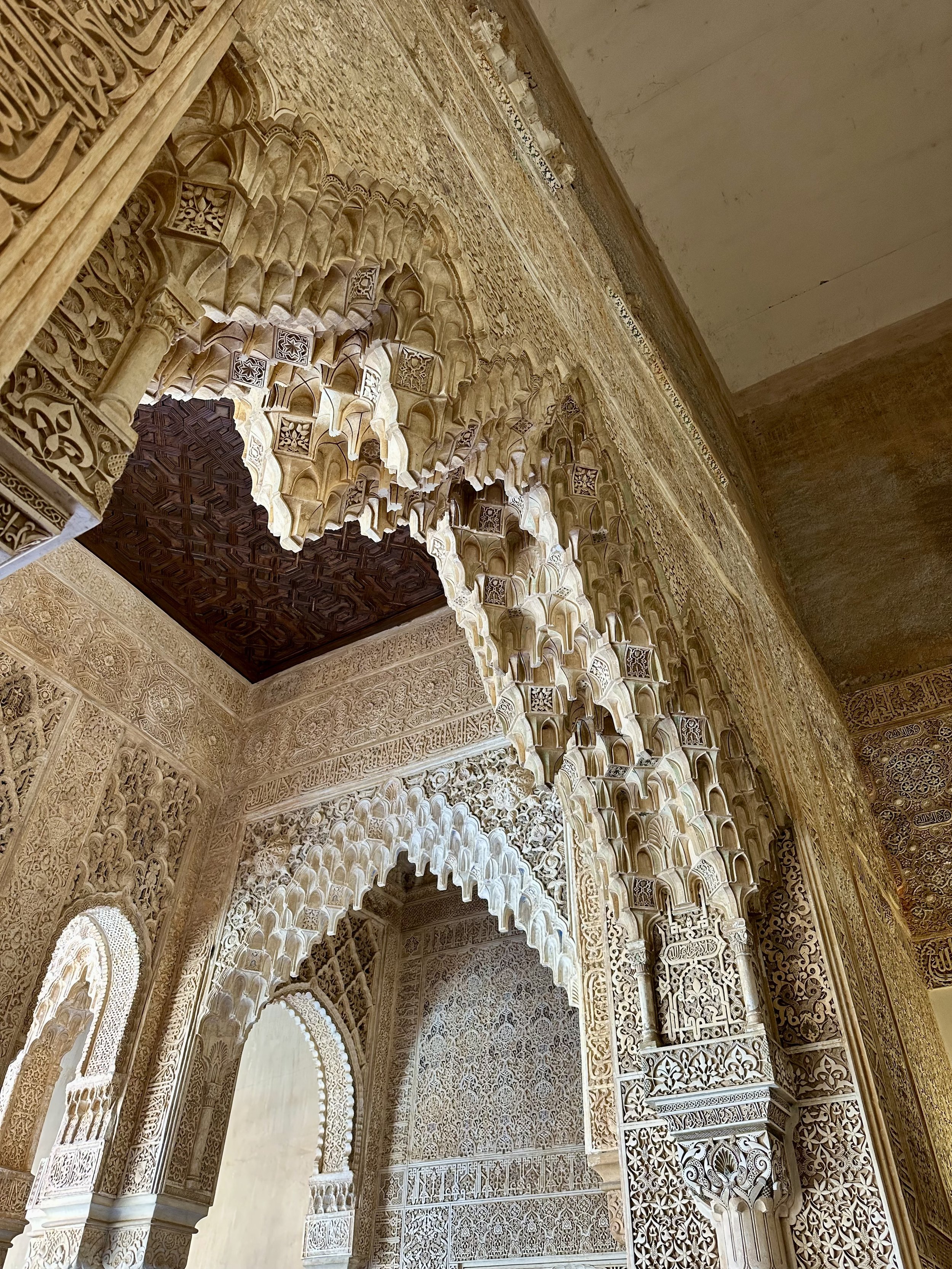

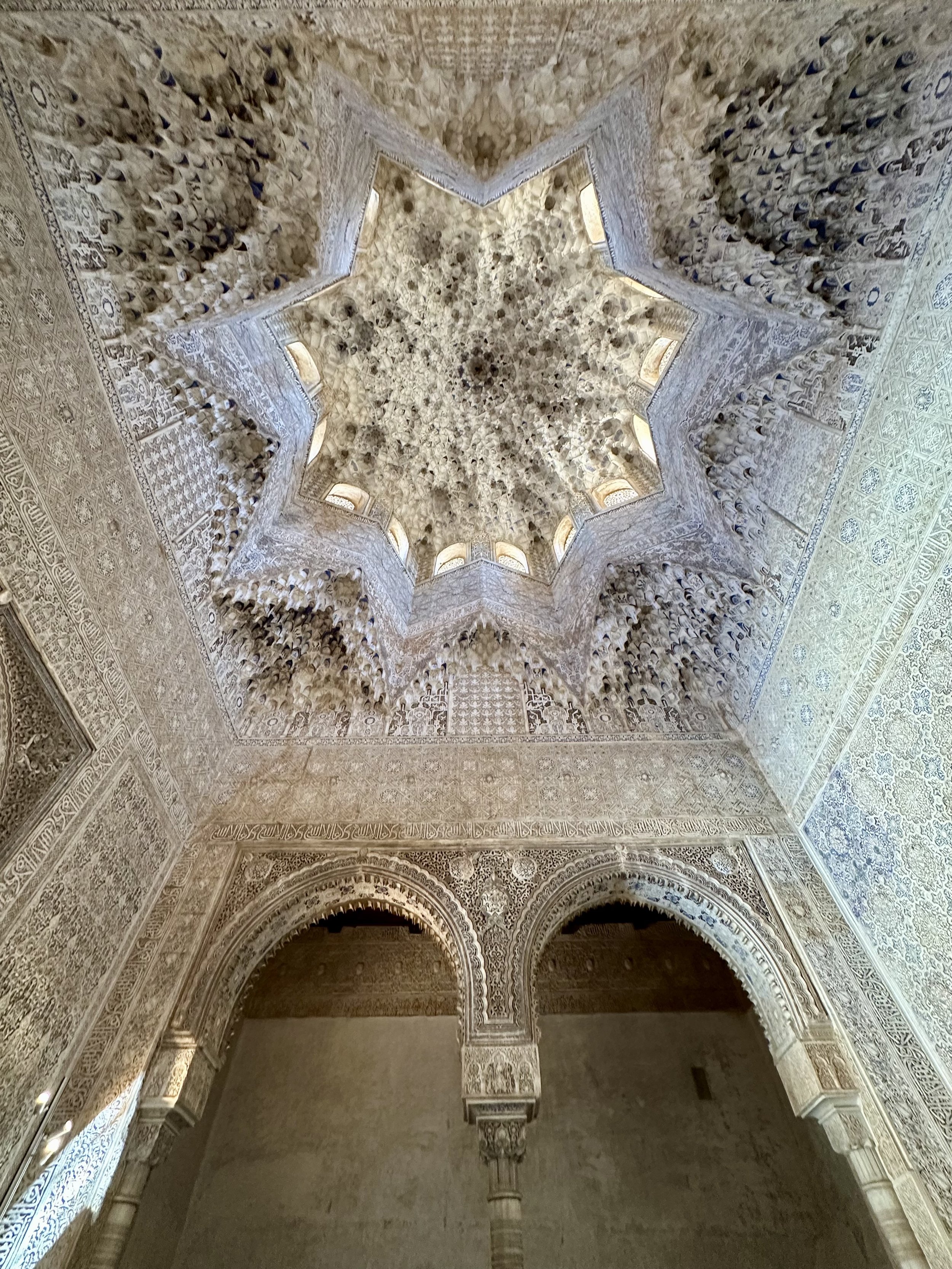
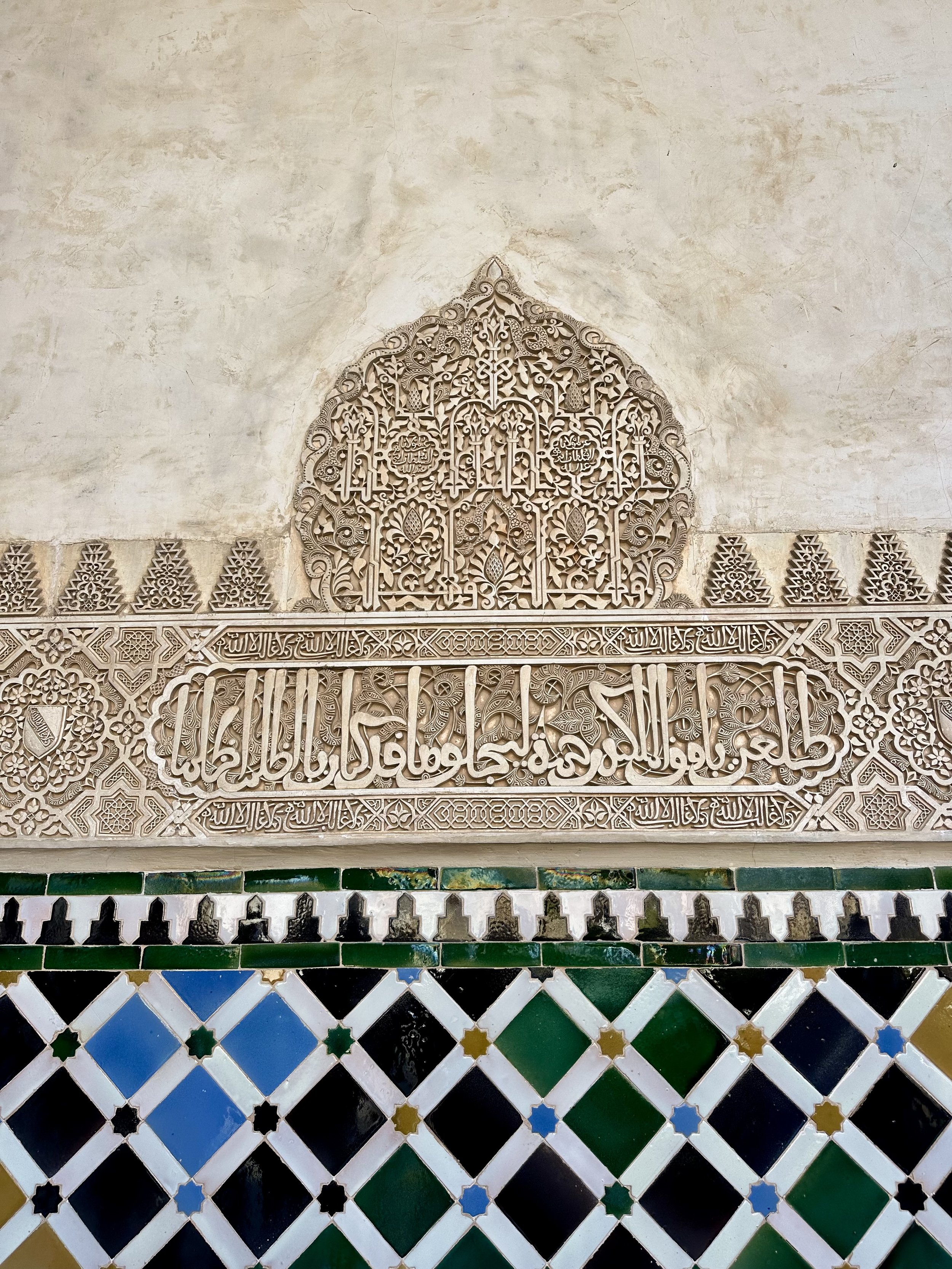

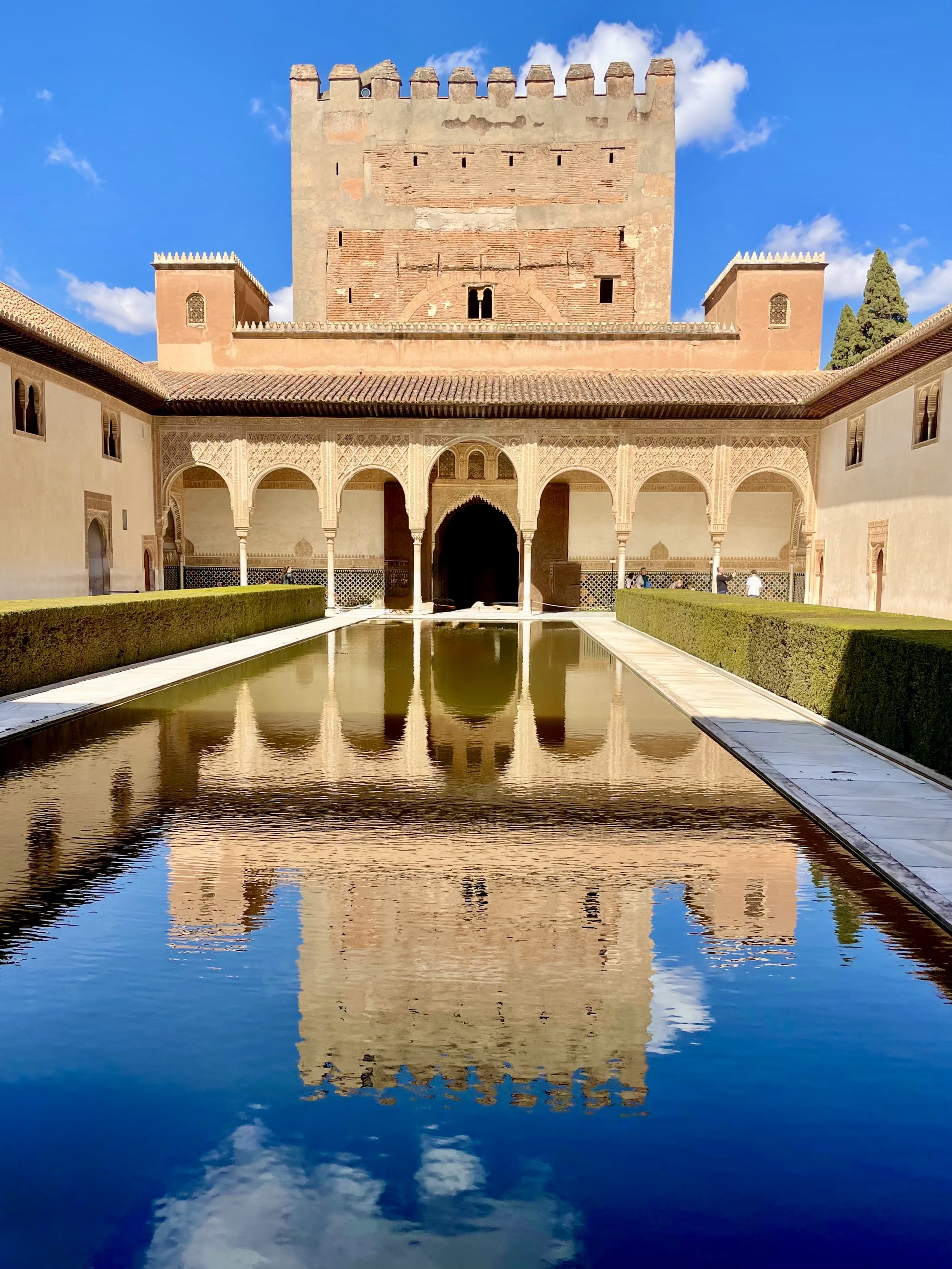

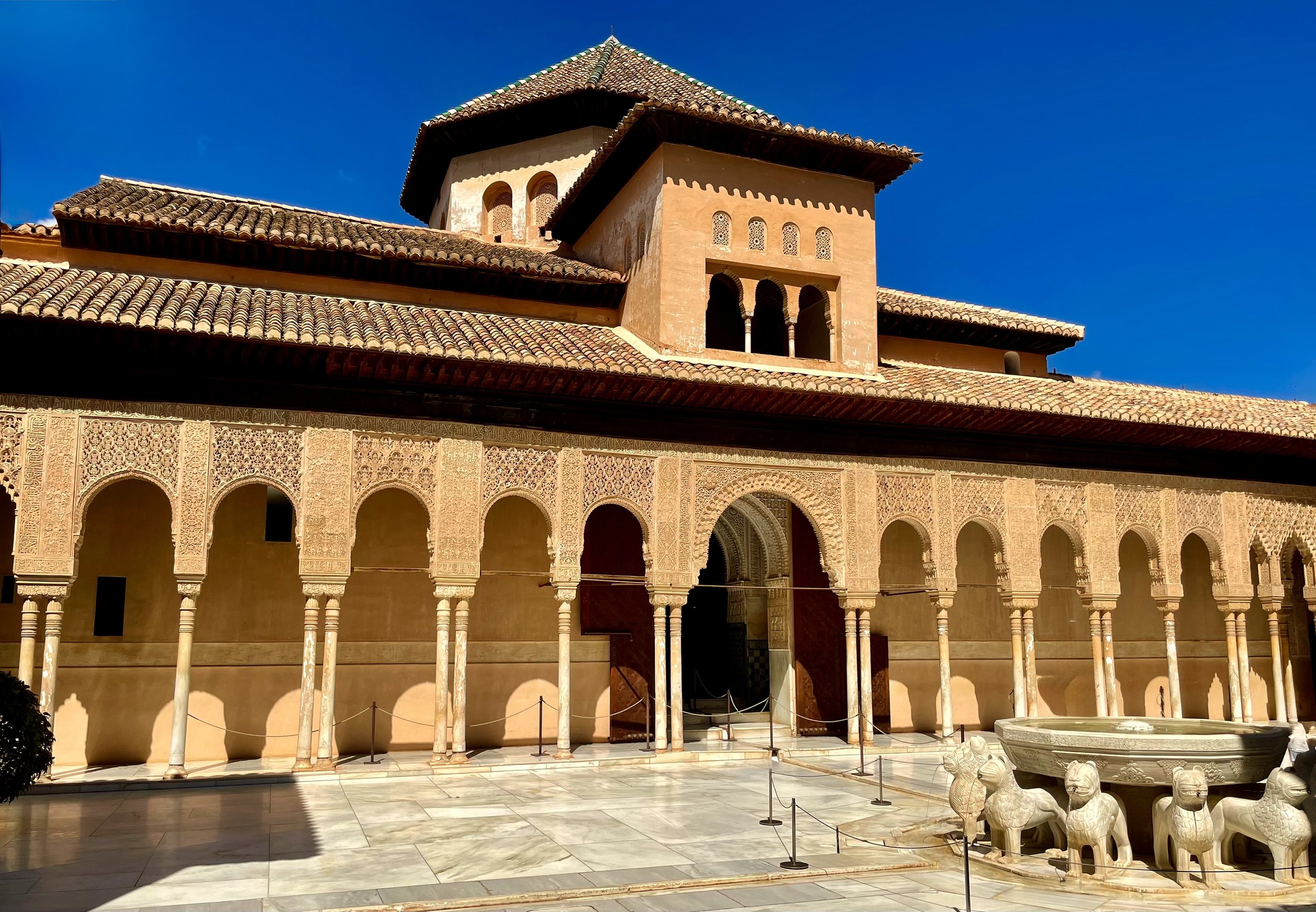
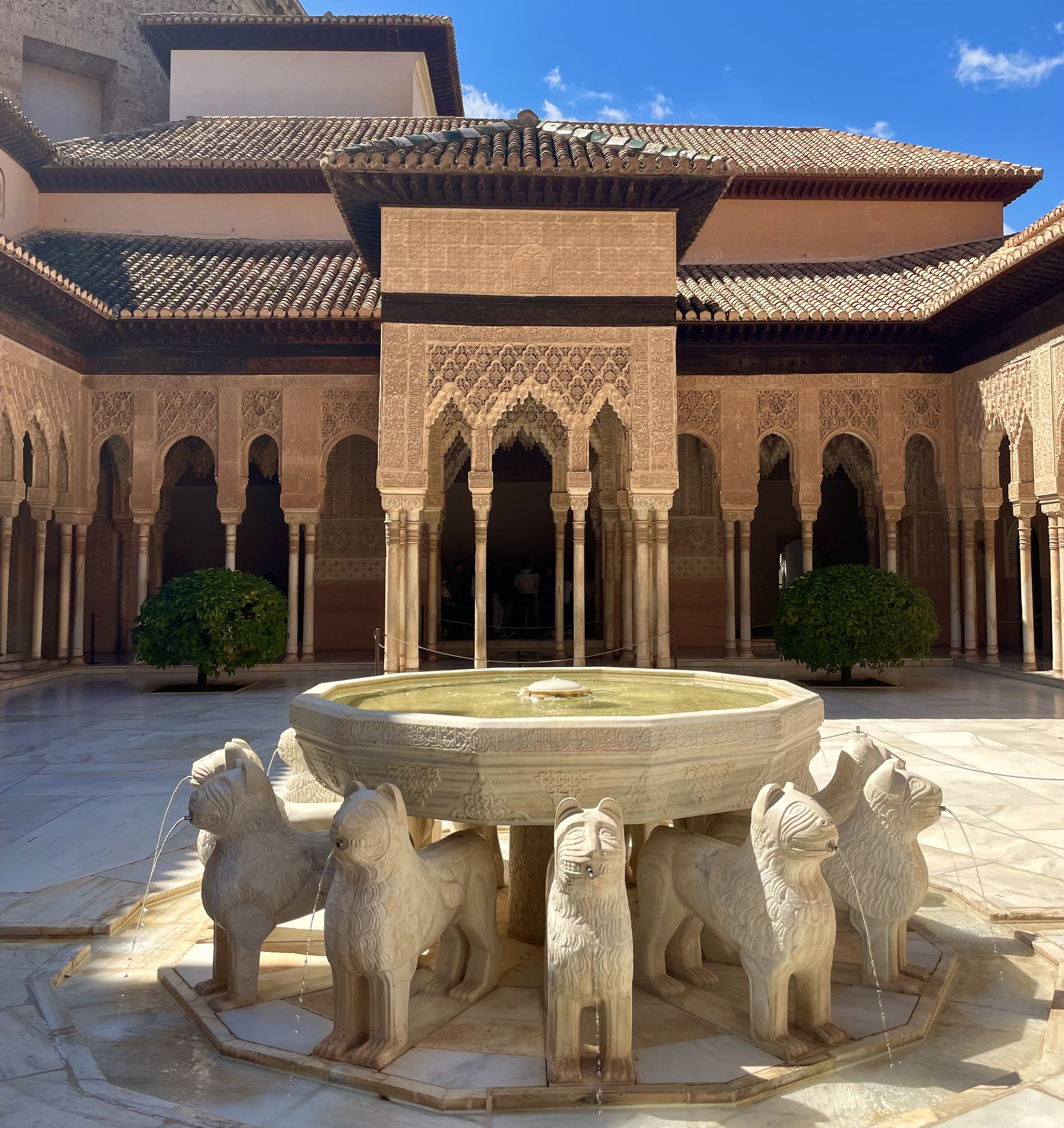

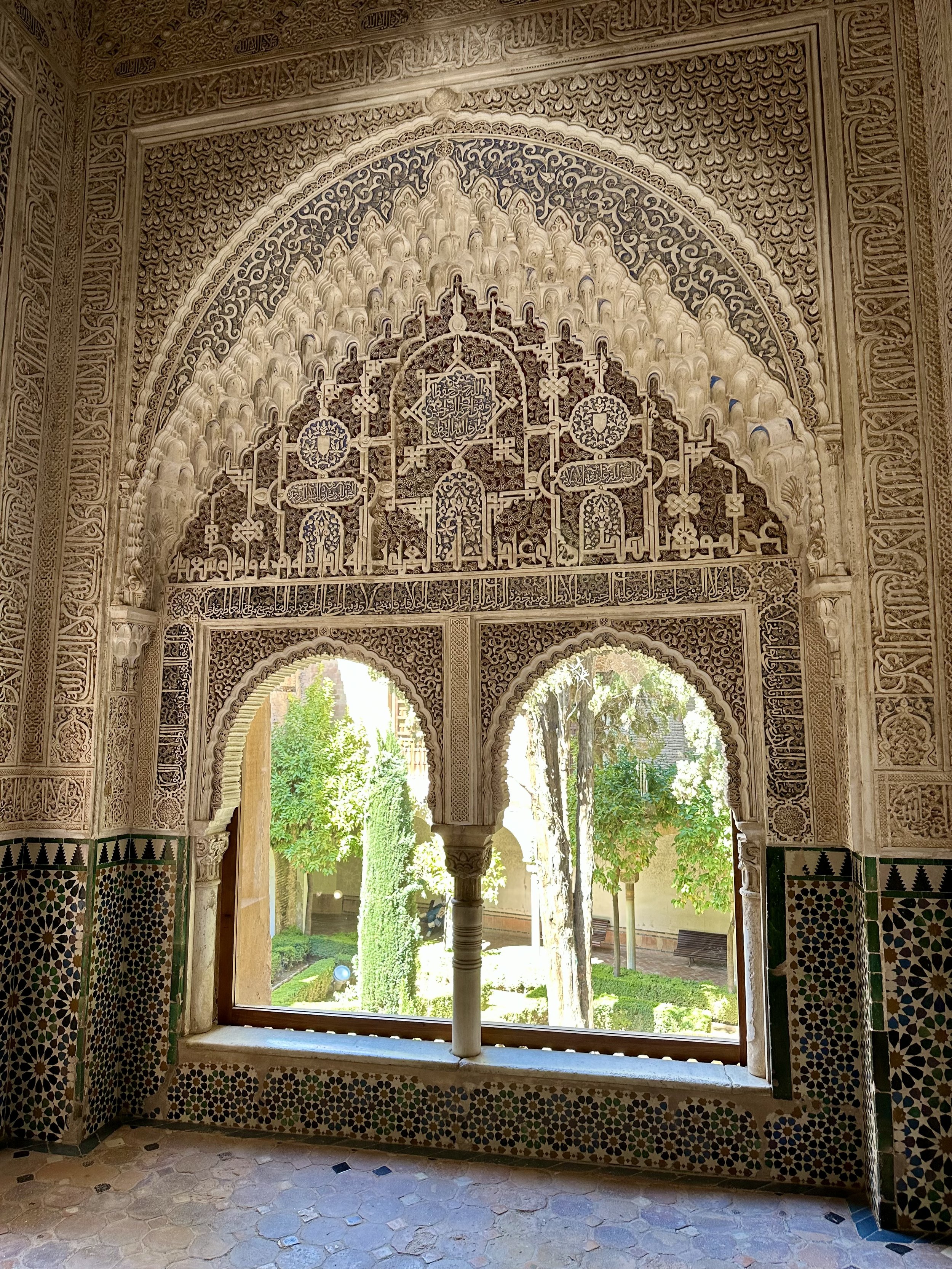
I wish I could have lingered a while in the Nasrid palaces, to savor the visual feast. What might it have felt like to live there in the 13th and 14th century, the golden age of the Nasrid Dynasty? Alas, we had to keep moving along with the steady flow of tour groups, and our visit was over much too soon. Now I understood why, for generations, the Alhambra has been the stuff of dreams.
“Perhaps there never was a monument more characteristic of an age and people than the Alhambra; a rugged fortress without, a voluptuous palace within; war frowning from its battlements; poetry breathing throughout the fairy architecture of its halls.”
